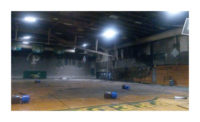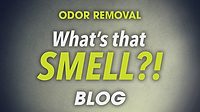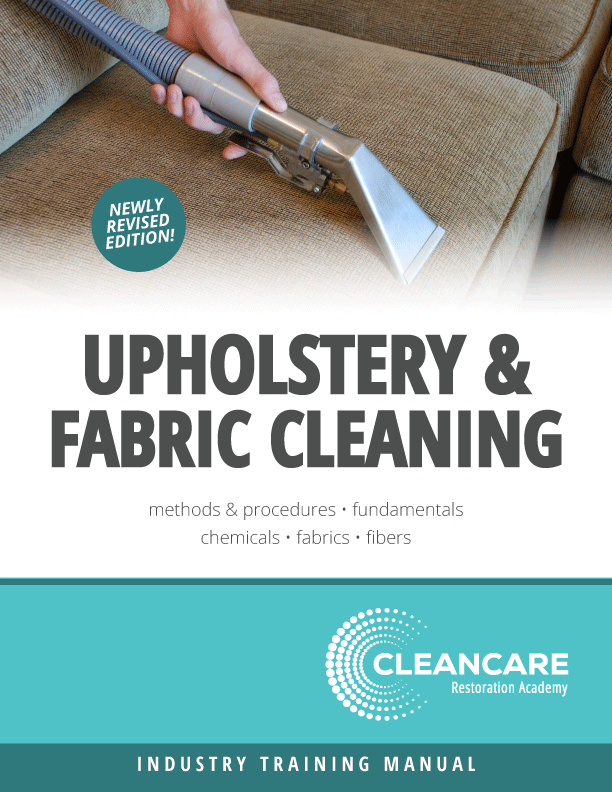Large Loss Odor Removal: When Rotten Food is Involved

Note from the editor: R&R recently chatted with Brian Bowen, co-owner of SERVPRO of Montgomery and several other locations, about a unique odor removal loss – and their unique, effective remediation approach. Here is what Brian had to say about the massive job, and what they learned in the process.
1. Share a little about yourself and background with SERVPRO.
In 1978, our parents purchased a SERVPRO franchise in Tuscaloosa, Ala.; there was only one other franchise in Alabama at that time. Our parents started the business out of our home and at the time SERVPRO’s focus was on carpet and furniture cleaning and associated services. In 1978, I was five years old and my brother, Bruce, was one year old. Over the years the business grew, they purchased two more franchise licensed in and around Tuscaloosa. They purchased three more in Montgomery in the late-90’s. In 2006, Bruce and I purchased the Montgomery location from our parents. Since then, we have expanded the business and opened a location in Atlanta, Georgia, in 2014 and in Charleston, South Carolina in 2017. We are one of 10 or so franchises in the SERVPRO system with the designation of “Extreme Response Team”. Our focus is the coordination & production of industrial, commercial and or complex restoration and remediation projects all over the United States focusing on fire, water, mold, natural disasters, environmental abatement & full service construction.
2. Walk us through this loss, the remediation plan, hurdles, and so on.
We were called by a very prestigious resort on the East Coast after Matthew and again after Irma. The resort had 11 buildings with no power and affected by water intrusion. During Matthew, the source of the water intrusion was a combination of wind driven rain and storm surge, after Irma it was higher elevated storm surge. In both instances it was several days before anyone was cleared by state and local government agencies which then allowed us to get into the resort to begin initial assessments.
It was several more days after that before we had temporary power installed and buildings stabilized. Four of the buildings contained the resort’s main kitchens and the majority of the structures were multiple levels. In each instance we were contending with category 3 water, spoiled food and contaminated oily water from elevator shafts, all having different odors.
In each building, following IH recommendations, we stabilized the indoor environment of each building while removing bulk water and disposing of spoiled food. After the initial cleanup was completed we implemented our drying plan, removal of porous affected materials in conjunction with our first detailed clean of kitchens and food prep areas.
The walk-in freezers all contents were deemed a total loss. The facilities were without power for several days, and as a result several odor causing issues were identified and prioritized in order to be addressed.
Our team disassembled and disposed of the walk-in freezers and cleaned the concrete structure that was surrounding them. There was still an odor associated with spoiled sea food in the kitchens.
3. How did you tackle all the odors?
We had the contaminated water removed the water from the bottom of the elevator shafts and then cleaned the concrete shafts, there was still a greasy odor associated around the elevators. We placed hydroxyls in the kitchen areas and elevator shafts in and around the source of the odor and in each instance the hydroxyls helped neutralize the odor while additional cleaning took place.
Hydroxyls were installed in each of the eleven buildings (400,000 sf), and in conjunction with HEPA filtration devices to control and contain the odors associated with a Category 3 water loss.
4. Why hydroxyl?
Two weeks into the project, the resort partially reopened and guest were staying in the unaffected areas of several buildings. The hydroxyls were able to continue to run and did not affect the guest experience. They helped control any odors associated with the water loss and do not produce any additional odors associated with ozone. A major priority of the resort was for SERVPRO to restore their buildings without affecting the guest experience.
We cleaned and dried each building in five weeks without one documented customer concern.
4. How did you ensure customers were unaffected despite the large scale of the project?
The resort did not want its guests to have to even see the equipment. The resort wanted our desiccants out of sight of the guest so we worked with the resort’s engineering department as we placed the units on the roofs using a 150-foot crane. We also used the buildings existing ductwork as the means to distribute the desiccants dry air throughout the affected parts of the facility. SERVPRO also installed DX chillers in line with the desiccants to cool the dry air. The resort requested the common areas of the structures to maintain a 70 degree temperature, which we was able to accommodate the resorts request of 70 degrees throughout the drying of the structure.
The largest building houses the administration for the resort. Their entire administration department was heavily affected. We inventoried, packed, moved, unpacked and provided temp office space for the entire department while continuing to perform the remediation of their building. Our teams also cleaned all affected HVAC systems following NADCA standards in each building. The average daily labor was 125 people plus supervisors, APMs, Safety Officers, RCs, and a PM.
5. What are some other large loss instances where hydroxyl radicals have been effective with odor removal?
The first time we used hydroxlys, in 2011, was at an international corporation’s IT headquarters. They suffered an extensive fire affecting their entire 120,000 sq. ft. office with smoke & soot. Within 24 hours of being on site, the corporation had a previously scheduled national meeting set in their 20,000 sq. ft. meeting room. Thanks to our team’s quick work, and hydroxyls, the corporation was still able to hold their scheduled meeting with no significant detectable smoke odor in the room.
We have used hydroxyls on several projects in the past, from wildfires to complicated water/mold remediations with outstanding success. Source removal in combination with hydroxyls is key for controlling and eliminating numerous odors.
Looking for a reprint of this article?
From high-res PDFs to custom plaques, order your copy today!








